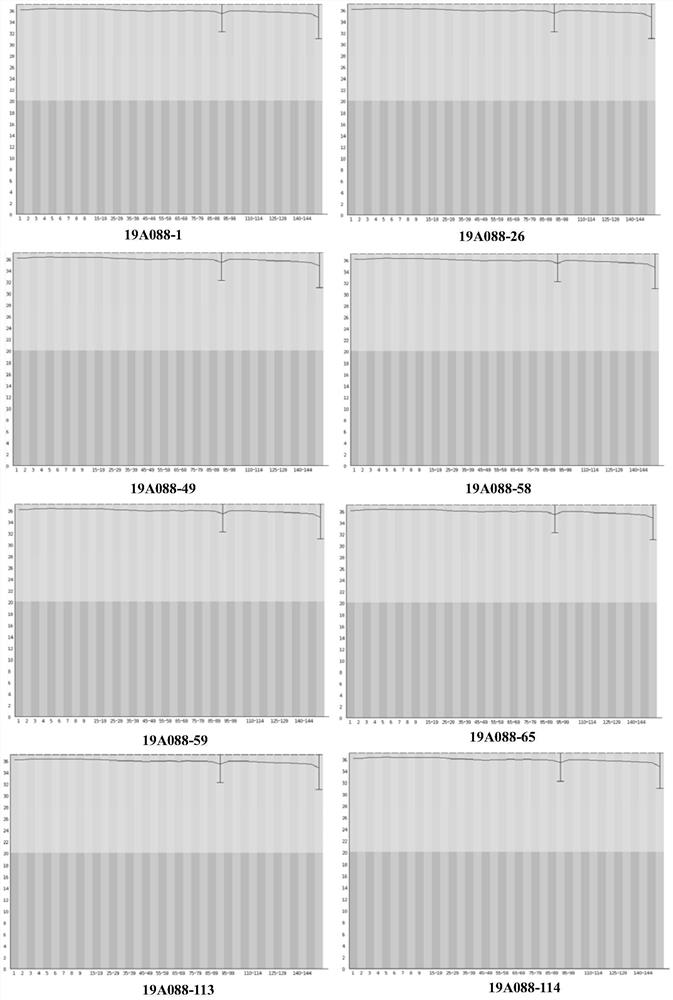Gene composition for screening difficult hereditary bone diseases, chip and kit
A gene chip, a difficult technology, is applied in the field of genetic compositions, chips and kits for screening difficult hereditary bone diseases, and can solve the problems of low capture rate, low quality of reads, large proportion of N in sequencing data, etc. Achieve the effect of high mutation detection accuracy, good capture effect and high cost performance
- Summary
- Abstract
- Description
- Claims
- Application Information
AI Technical Summary
Problems solved by technology
Method used
Image
Examples
Embodiment 1
[0061] This embodiment provides a method for screening difficult genetic bone diseases, based on the principle of customizing the targeted capture sequencing kit based on the above-mentioned 322 genes, the method includes the following steps:
[0062] 1. DNA library establishment:
[0063] 1) Evaluation of DNA Quality: High-quality genomic DNA is a prerequisite for genome sequencing experiments. Genomic DNA quality detection is carried out by the following two methods: agarose gel electrophoresis to detect the integrity of genomic DNA: the electrophoresis bands are required to be clearly visible without obvious tailing; Nanodrop 2000 / Qubit to detect the concentration and quality of genomic DNA: the required concentration is ≥50ng / μL, total amount≥2μg, OD260 / 280=1.8~2.0.
[0064] 2) Sorting and purifying DNA and fragmentation (DNA Purification and Shearing): Genomic DNA was taken for ultrasonic fragmentation. After fragmentation, the DNA length is mostly between 100-500bp. ...
Embodiment 2
[0079] In this example, the screening of candidate gene mutations related to difficult hereditary bone diseases was carried out on 15 patients with suspected genetic bone diseases, and the following steps were used to realize:
[0080] Step 1: Customize a targeted capture sequencing kit for the above 322 genetic bone disease-related pathogenic genes, including probes for the above 322 genes. The gene sequencing kit can detect more than 400 known genetic bone diseases;
[0081] Step 2. Establish a high-quality library for sequencing analysis. Specific steps: (1) Take genomic DNA for ultrasonic fragmentation, add exonuclease and phosphokinase of T4 DNA polymerase to repair the end, and add a single gland to the 3' end of the DNA. To prevent end self-ligation between DNA fragments, use T4 DNA ligase to connect illumina sequencing adapters to both ends of library DNA. Fragments of different sizes are separated by electrophoresis, and excess sequencing adapters and adapter self-lig...
PUM
 Login to View More
Login to View More Abstract
Description
Claims
Application Information
 Login to View More
Login to View More - R&D Engineer
- R&D Manager
- IP Professional
- Industry Leading Data Capabilities
- Powerful AI technology
- Patent DNA Extraction
Browse by: Latest US Patents, China's latest patents, Technical Efficacy Thesaurus, Application Domain, Technology Topic, Popular Technical Reports.
© 2024 PatSnap. All rights reserved.Legal|Privacy policy|Modern Slavery Act Transparency Statement|Sitemap|About US| Contact US: help@patsnap.com










